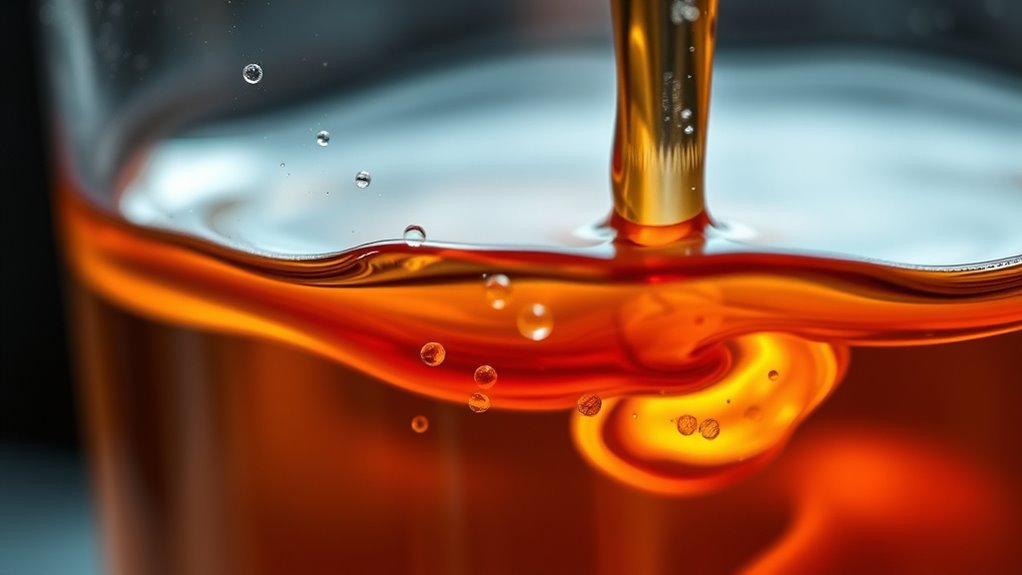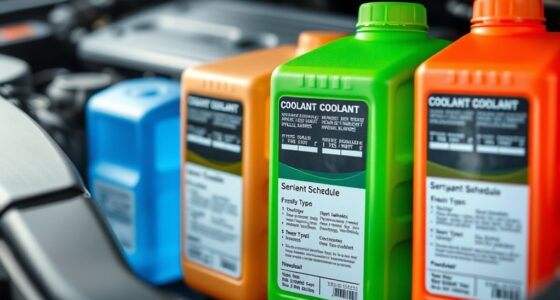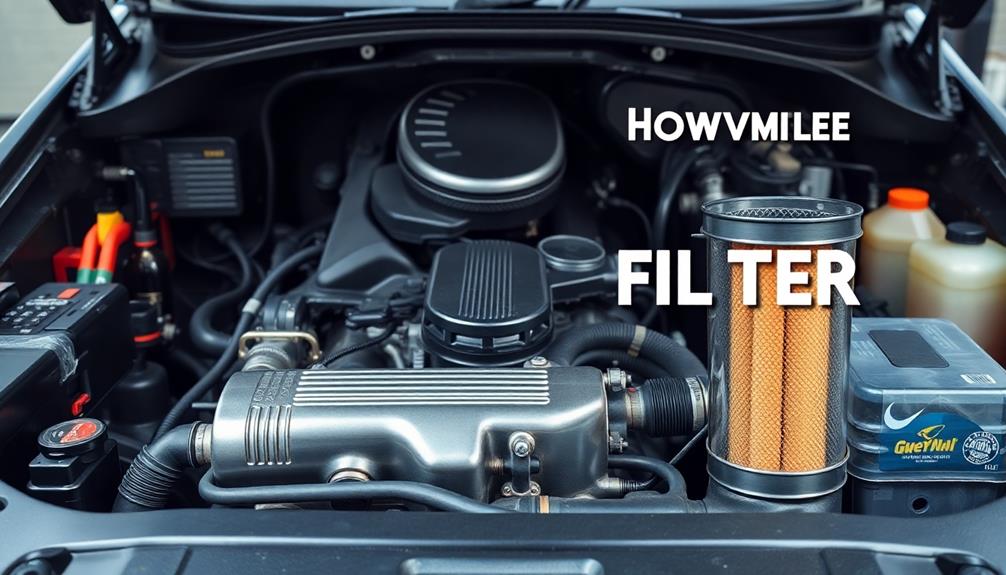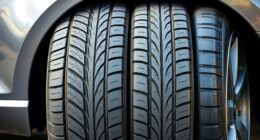Brake fluid is hygroscopic, meaning it naturally absorbs moisture from the air over time. This water intake lowers the fluid’s boiling point, risking vapor lock and brake failure during heavy braking. Regularly testing your brake fluid helps you catch high moisture levels before problems occur. If you keep an eye on these conditions, you’ll guarantee your brakes stay safe and effective. Want to discover how to manage moisture levels and keep your brake system in top shape?
Key Takeaways
- Brake fluid is hygroscopic, meaning it absorbs moisture from the environment over time.
- Moisture absorption lowers the brake fluid’s boiling point, risking vapor lock and brake failure.
- Regular testing of brake fluid helps monitor moisture levels and prevent system corrosion.
- Excessive water content in brake fluid can cause corrosion of internal brake components.
- Proper maintenance and timely fluid replacement are essential for brake system safety and performance.

Have you ever wondered what keeps your car’s brakes working smoothly? It all comes down to the brake fluid, a essential component in your braking system. Brake fluid transmits force from the brake pedal to the brake components, allowing you to stop safely. But not all brake fluids are the same. There are different brake fluid types—such as DOT 3, DOT 4, DOT 5, and DOT 5.1—each with unique properties suited for specific vehicles and driving conditions. Understanding these types is imperative because choosing the right one guarantees maximum performance and safety. For example, DOT 3 and DOT 4 are glycol-based fluids that absorb moisture over time, which can lead to corrosion and brake failure if not maintained properly. DOT 5, on the other hand, is silicone-based and doesn’t absorb water, making it resistant to moisture-related issues, but it’s incompatible with certain brake system components. Knowing the differences helps you make informed decisions about fluid replacement and maintenance.
Brake fluid testing is an essential part of keeping your braking system in top shape. Over time, brake fluid can degrade, especially since most types are hygroscopic—they attract and absorb water from the atmosphere. This moisture content lowers the boiling point of the fluid, increasing the risk of vapor lock and brake failure under heavy use. Regular brake fluid testing allows you to check its moisture level and determine whether it’s time for a flush or replacement. You can perform simple tests yourself with a brake fluid tester, or have a professional do it during routine maintenance. Testing is quick, non-invasive, and provides valuable insight into the condition of your brake fluid. If the moisture level is too high, it’s a sign that you need to flush and replace the fluid to restore proper braking performance. Ignoring these signs can lead to corrosion inside the brake system, compromised braking power, or even complete brake failure.
Additionally, advancements in AI security can help monitor and improve the safety of automotive systems, including braking components, by detecting potential issues before they lead to failure. In essence, understanding the different brake fluid types and regularly testing your brake fluid plays an critical role in your vehicle’s safety. Using the correct brake fluid ensures your braking system functions efficiently under various conditions, while testing helps catch issues before they become serious problems. Proper maintenance not only extends the lifespan of your brake components but also gives you peace of mind whenever you press the pedal. Remember, brake fluid isn’t just a simple liquid; it’s a key player in your vehicle’s safety system. Keeping it in good condition ensures your brakes perform reliably every time you need them, making every drive safer and smoother.
Frequently Asked Questions
How Often Should Brake Fluid Be Replaced for Optimal Performance?
You should replace your brake fluid every 2 to 3 years for peak performance. Regular brake maintenance includes fluid testing to check for moisture or contamination, which can affect braking efficiency. If your brake fluid appears dark or has absorbed moisture, it’s time for a fluid change. Staying on top of fluid testing ensures your braking system remains responsive and safe, preventing potential brake failure caused by degraded fluid.
Can Contaminated Brake Fluid Cause Brake Failure?
Think of contaminated brake fluid as a sneaky villain in your car’s safety story. Yes, it can cause brake failure by impairing fluid’s ability to transfer force smoothly. When brake fluid degrades due to moisture absorption, it loses its lubricating properties, leading to corrosion and reduced performance. Regularly replacing brake fluid keeps moisture at bay, ensuring your brakes work reliably, just like a hero always ready to save the day.
What Are the Signs of Moisture Contamination in Brake Fluid?
You can spot moisture contamination in your brake fluid by checking moisture indicators and observing the brake fluid color. If the moisture indicator changes color or if the brake fluid appears dark, cloudy, or milky, moisture may be present. These signs mean your brake fluid has absorbed water, which can reduce braking efficiency. Regularly inspecting the fluid helps prevent brake failure caused by moisture contamination.
Is Synthetic Brake Fluid More Hygroscopic Than Traditional Types?
Synthetic brake fluid is generally more hygroscopic than traditional types because its synthetic properties enhance moisture absorption. This means it can attract and hold more water from the environment, which might lead to quicker contamination. If you use synthetic brake fluid, you should check your brake system more frequently and replace the fluid as recommended, since its higher moisture absorption can affect brake performance over time.
How Does Temperature Affect the Hygroscopic Properties of Brake Fluid?
Temperature variation considerably influences the hygroscopic properties of brake fluid by affecting moisture absorption. As temperatures increase, brake fluid can absorb more moisture from the environment, which can diminish its effectiveness and lead to corrosion. Conversely, lower temperatures slow moisture absorption, helping preserve fluid quality. You should regularly check your brake fluid, especially after temperature fluctuations, to guarantee it stays within ideal moisture levels and keeps your brake system functioning safely.
Conclusion
So, next time you ignore that tiny brake fluid reservoir, remember it’s like inviting a sponge to your car’s braking system—ready to soak up every drop of moisture and turn your ride into a soggy mess. Think of it as your vehicle’s personal swamp, quietly sabotaging your stopping power. Keep it dry, keep it happy—or risk your brakes turning into a soggy, unreliable disaster. After all, nobody wants their car to double as a swamp boat!









